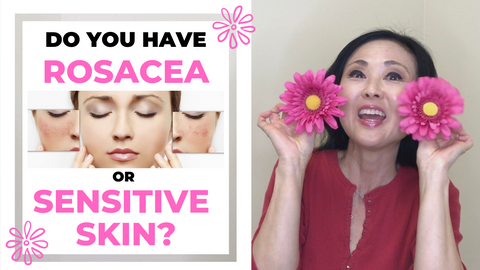Best TYPES of Moisturizers for oily skin depends on what the skin condition is.
For example, you could have oily skin but your skin feels dry and sensitive. For someone who has dry sensitive oily skin will need a different level of moisturizer than someone who has oily shiny skin that feels tight but may not look dry.
Typically, the best types of moisturizer for oily skin will vary between the summer and the winter.
If your skin is producing too much oil, then you may want to look for a moisturizer that has more humectant and water content than oil or wax content.
Oily skin that is producing too much oil is usually dehydrated so to slow down water loss in the skin, the skin will overproduce oil to create a lipid barrier. This is especially true in dry, arid climates where the humidity level in the air is low.
Typically, this is why oily break out prone skin seems to clear up in humid weather.
Best Types of Moisturizer for oily skin; Type 1 or Level 1:
This type of moisturizer will usually be gel based and you can usually see through the product. This type of moisturizer will usually have a high water content such as water and aloe vera gel.
These will have a higher amount of humectants than oils , waxes and /or silicone.
Ingredients such as:
-glycerine
-sodium hyaluronate
-hyaluronic acid
-Urea
-Panthenol
-Sorbitol
-honey
-gelatin
-Sodium PCA
-Butylene glycol
-Propylene glycol
-sodium PCA
-Aloe Vera
This hydrating gel would be a good example. It has more humectant ingredients than any oils or waxes. IT only has one ingredient that helps seal in the moisture and it is grapeseed oil which is water dispersible oil.
Type 2 / Level 2 Moisturizer for Oily Skin:
This type of moisturizer for oily skin is a medium weight moisturizer that could be categorized as a light lotion, milky lotion or a gel cream or gel lotion.
This moisturizer for oily skin would still have a higher level of humectants but will likely have more emollients and occlusives in the product.
It is more common to see different types of silicone in these products such as trimethicone, dimethicone, cyclomethicone, etc.
For some oily skin types, they may be less break out prone with silicone than with oil, especially those who over produce oil.
This type of moisturizer may also add fatty alcohols or fatty acids to their product.
This tends to break out some oily skin types.
A good example of this type of moisturizer would be:
This would be considered a medium weight lotion for oily skin that is dehydrated.
Type 3/ Level 3 Moisturizer for DRY OILY SKIN:
This moisturizer will be a cream. This is for oily skin that feels dry but may still have some oily shine.
This product type will have emollients and moisturizers such as fatty acids and fatty alcohols but will be ingredients that tend to be LESS break out prone. Although some extreme break out prone skin may still find that it may cause some pores clogging.
For example some of the more common ingredients used:
-capyryl triglyceride
-cetearyl olivate
-squalene
This type of moisturizer is not recommended for someone who has active breakouts.
This type of moisturizer would be under a medium weight to heavier moisturizers.
A good example of these would be:
POST TREATMENT CREAM-MOISTURIZER CAN USE WITH RETIN A or FRAXEL
***PRO TIP***
The Pro tip for using these different types of moisturizers is that if you spray a hydrating mist ON your skin BEFORE you apply moisturizers, then the humectants in the moisturizer will then bind the water molecules to your skin INSTEAD of not having enough moisture on your skin and having to draw up the moisture from within the skin up to the epidermis.
Follow us @:
YouTube Channel:https://www.youtube.com/channel/UC4XGWX6eheTisHo8UBsdOWA
Instagram:@GoSeeChristy
Facebook:https://www.facebook.com/goseeChristyBeautyBoutique/
Twitter:https://twitter.com/goseechristy
Pinterest:https://www.pinterest.com/goseechristy/



